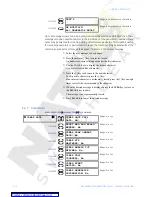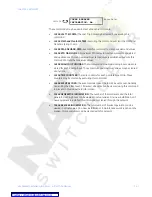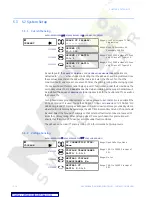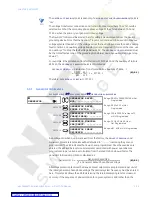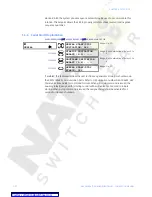
CHAPTER 5: SETPOINTS
489 GENERATOR MANAGEMENT RELAY – INSTRUCTION MANUAL
5–29
5.6
S5 Current Elements
5.6.1
Inverse Time Overcurrent Curve Characteristics
Description
The 489 inverse time overcurrent curves may be either ANSI, IEC, or GE Type IAC standard
curve shapes. This allows for simplified coordination with downstream devices. If however,
none of these curve shapes is adequate, the FlexCurve™ may be used to customize the
inverse time curve characteristics. Definite time is also an option that may be appropriate
if only simple protection is required.
A multiplier setpoint allows selection of a multiple of the base curve shape that is selected
with the curve shape setpoint. Unlike the electromechanical time dial equivalent, trip times
are directly proportional to the time multiplier setting value. For example, all trip times for a
multiplier of 10 are 10 times the multiplier 1 or base curve values. Setting the multiplier to
zero results in an instantaneous response to all current levels above pickup.
Note
Regardless of the trip time that results from the curve multiplier setpoint, the 489
cannot trip any quicker than one to two cycles plus the operate time of the output
relay.
Time overcurrent tripping time calculations are made with an internal “energy capacity”
memory variable. When this variable indicates that the energy capacity has reached
100%, a time overcurrent trip is generated. If less than 100% is accumulated in this
variable and the current falls below the dropout threshold of 97 to 98% of the pickup value,
the variable must be reduced. Two methods of this resetting operation are available,
“Instantaneous” and “Linear”. The Instantaneous selection is intended for applications with
other relays, such as most static units, which set the energy capacity directly to zero when
the current falls below the reset threshold. The Linear selection can be used where the 489
must coordinate with electromechanical units. With this setting, the energy capacity
variable is decremented according to the following equation.
(EQ 0.3)
where:
T
RESET
= reset time in seconds
E
= energy capacity reached (in %)
M
= curve multiplier
C
R
= characteristic constant (5 for ANSI, IAC, Definite Time and FlexCurves™, 8 for
IEC curves)
Table 5–1: 489 Overcurrent Curve Types
ANSI
IEC
GE Type IAC
Other
Extremely Inverse
Curve A (BS142)
Extremely Inverse
FlexCurve™
Very Inverse
Curve B (BS142)
Very Inverse
Definite Time
Normally Inverse
Curve C (BS142)
Inverse
Moderately Inverse
Short Inverse
Short Inverse
T
RESET
E M C
R
×
×
100
--------------------------
=


